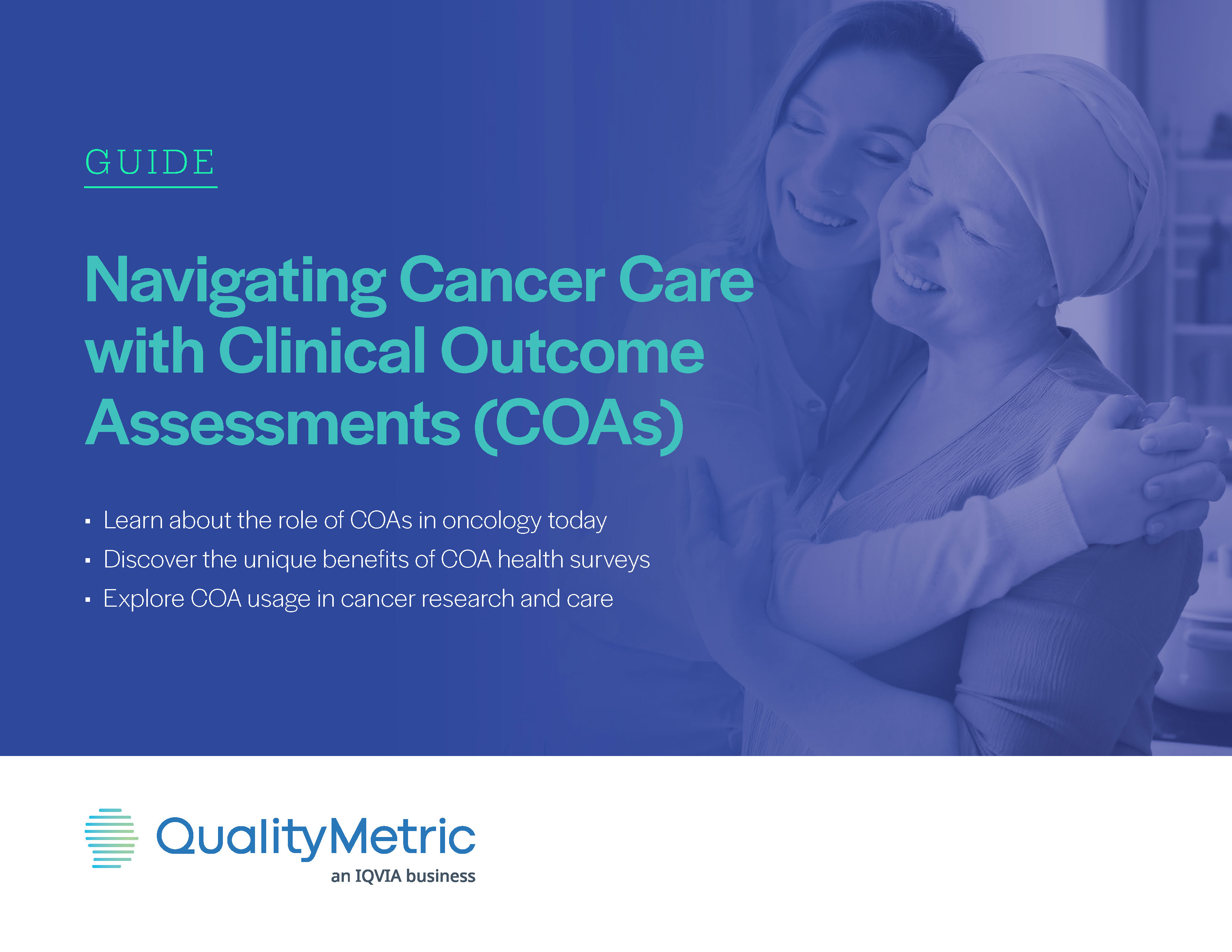03.02.22
Measuring Health Outcomes in Clinical Research
Patient-centricity is paving a new path forward in the healthcare industry, changing the way we structure healthcare systems, deliver care and develop products. On a global scale, organizations are prioritizing the patient journey and shifting to value-based care as healthcare costs grow. These changes—along with other contributing factors—have placed a greater emphasis on outcome measurement.1 Measuring health outcomes as we develop and utilize new medical devices, treatments and therapies is a must; it allows researchers and healthcare professionals to more objectively assess patients’ health before and after interventions, determine which solutions are safe and effective and gather insights on the specific benefits that interventions offer patients.1 But measuring health outcomes is a challenging task when no ideal approach exists and any outcome information you do collect depends on the reason you’re collecting it.1
Using Clinical Outcome Assessments
How do you choose an outcome to measure?
As the industry stands today, the answer to the outcome dilemma is the clinical outcome assessment (COA). COA questionnaires, surveys, diaries and rating scales can help us organize, categorize and study the impact of care. Although clinician-reported outcome (ClinRO) measures have long been the standard for assessing patient experiences in clinical research, the renewed focus on patient-centric care has made more room for patient-reported outcome (PRO) measures in many areas industry-wide. Data derived from real lived experiences and gathered directly from the patient’s perspective through this type of clinical outcome assessment support clinical trials and routine care. COAs can also be conducted in person or remotely. Additionally, PRO measures can paint a detailed picture of symptoms, health-related quality of life (HRQoL) and countless other facets of a patient’s experience with a disease or condition. When data cannot be obtained directly from patients, observer-reported measures (ObsRo) are a valuable alternative for examining functional health and well-being to fuel a variety of initiatives.
Clinical outcome measures in healthcare, no matter their form or application, should be comparable, complete, meaningful and precise in their depiction of patient experiences.2 To develop and evaluate an outcome instrument is to consider its ability to represent targeted patients, measure clinically meaningful change, establish consistency, remain reliable and reproducible and meet a host of other conditions to determine validity.3 Through an iterative process, COA providers create health surveys that start with patient population input and grow to encompass the most important elements researchers and healthcare professionals need to identify changing health statuses and contextualize their findings to improve patient experiences.
Designing Effective COA Programs
How do you compare outcomes across patients, products and purposes?
To get the most out of clinical research studies and everyday healthcare practices, it’s critical to explore patient outcome measures and other COA tools specific to populations, circumstances, diseases and conditions so that comparisons can be more easily made across these areas once results are gathered. There are several aspects to consider when sizing up an existing outcome instrument or testing a novel measure with a COA provider. Taking the time to make an educated decision can proactively address potential problems with survey administration, data collection, data validity and data analysis.
Examples of Key Health Survey Considerations
- Survey instructions
- Survey response options
- Survey administration mode
- Target demographic
- Target area language
- Target area culture
- Target area literacy
Providers equipped with quantitative researchers trained in classical test theory and modern psychometric methods may work alongside you to develop outcome measures and generate the psychometric evidence to use those measures in various clinical applications. Working with an experienced provider will unlock opportunities to not only make the right decision about your instrument, but also pursue translations and linguistic validation efforts to expand your reach.
Industry-trusted PRO measurement tools paired with scientific consulting services can help you design, implement and interpret the results of a comprehensive COA program, resulting in successfully navigating product development, regulatory approval, product marketing and more. With the guidance of scientific consulting, you can analyze the clinical and commercial landscape for a specific disease area, identify and select relevant clinical endpoints and construct an evidence generation strategy for compliant COA programs across the globe.
Interpreting findings with full objectivity and precision within the trajectory of a condition, the clinical efficacy of an intervention and the therapeutic benefits of different solutions will always be a complex feat. In an ideal world, the healthcare community will have a much smaller set of outcome instruments with which to measure diverse patient experiences so comparisons can be easily made between studies and situations. For now, extracting meaningful, scientifically valid data is accomplished by adopting a fit-for-purpose approach to outcome measures in research and everyday care, supported by providers like QualityMetric.
Browse our suite of health surveys to learn more about COA solutions for measuring patient outcomes and explore their use in your research or clinical practice.
References
- Kuhn, JE. Why Measure Outcomes?. Instr Course Lect. 2016;65:583-586. https://pubmed.ncbi.nlm.nih.gov/27049223/
- Kleinpell, RM. Whose outcomes. Patients, providers, or payers?. Nurs Clin North Am. 1997;32(3):513-520. https://pubmed.ncbi.nlm.nih.gov/9254636/
- Mohtadi NG. Outcome Measure Development. Instr Course Lect. 2016;65:577-582. https://pubmed.ncbi.nlm.nih.gov/27049222/
 NEW PROS IN ONCOLOGY GUIDE
NEW PROS IN ONCOLOGY GUIDE
